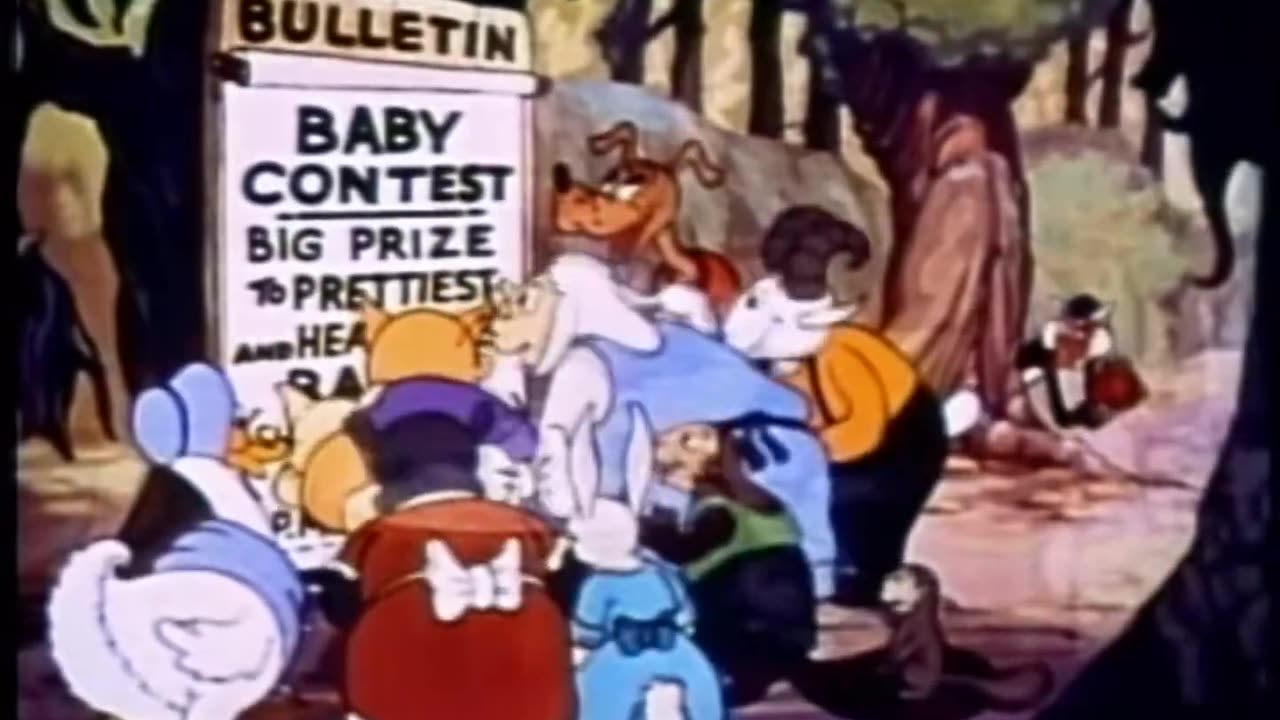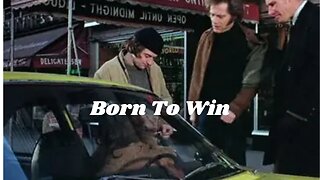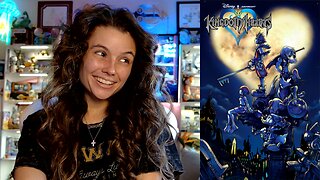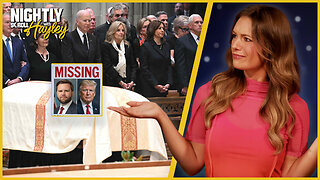Premium Only Content

Little Lamby (Animated Short, 1937)
Little Lamby is a 1937 animated short from Fleischer Studios’ Color Classics series, directed by Dave Fleischer with animation by Dave Tendlar and William Sturm. Produced by Max Fleischer and Adolph Zukor, this 7-minute Technicolor cartoon features a mix of comedy, family-friendly antics, and a fairy-tale-inspired plot, with music by Sammy Timberg and voices by Jack Mercer, Mae Questel, Dorothy Compton, and Beatrice Hagen.
Plot Summary
The story revolves around a scheming fox who enters a happy valley filled with animals and their babies. Spotting a little lamb, the fox disguises himself with a fake beard and bushy eyebrows and announces a baby contest to lure his prey. Animal mothers prepare their young—a rabbit, a pig, a squirrel, three ducklings, and a family of rabbits—but the fox rejects them all, declaring Little Lamby the winner, with the ulterior motive of making the lamb his dinner. The fox kidnaps Little Lamby and flees on a motorcycle, barricading himself in a hollow tree to prepare his meal. The animal parents, led by a ram, a beaver, and two birds, attempt a rescue, with the ram battering the tree, the beaver gnawing at it, and the birds sawing. The fox foils their initial efforts, but the battering ram crew eventually breaks through, saving Little Lamby and punishing the fox.
Visuals and Style
The cartoon opens with a striking three-dimensional tabletop landscape, utilizing Fleischer’s Stereoptical process, which sets animated cels against real 3D backgrounds for depth. The use of vibrant Three-Color Technicolor (a step up from the Two-Color process used in earlier Color Classics) enhances the lush valley setting and character designs. The animation is fluid, with expressive character movements, though the standout is the opening shot’s eye-popping detail. The fox’s exaggerated grunting and sly demeanor add a touch of personality, while Little Lamby is designed for pure cuteness, lacking deeper traits.
Music and Voice Acting
Sammy Timberg’s score blends energetic and sensitive tones, with rich orchestration that complements the action without being overly sentimental. The music is a highlight, maintaining the lighthearted tone typical of the Color Classics series. Voice performances, particularly Jack Mercer’s fox, are lively, though the lamb’s dialogue is minimal and cutesy, voiced likely by Mae Questel or Dorothy Compton.
Reception and Critique
Little Lamby is considered uneven by critics and fans. The animation and music are praised, especially the opening visuals and colorful palette, but the plot is criticized as paper-thin and predictable, with a slow pace and excessive focus on cuteness over humor. The gags, like the animal mothers primping their babies, feel underwhelming, and the tension between the fox and lamb lacks excitement due to the lamb’s blandness. The fox is the most compelling character, with a suitably villainous edge, but the cartoon’s reliance on sugary sentimentality makes it less engaging than other 1937 Fleischer works, like standout Popeye shorts. Some reviews note it feels more like a weaker 1940s Fleischer cartoon than a product of their stronger late-1930s output.
Historical Context
As part of the Color Classics series (1934–1941), Little Lamby was Fleischer Studios’ attempt to rival Disney’s Silly Symphonies. Unlike some entries featuring recurring characters like Betty Boop or Hunky and Spunky, this short uses one-off characters. Its use of Three-Color Technicolor, following Disney’s exclusive contract expiration in 1935, reflects Fleischer’s push for visual innovation. However, the series was inconsistent, and Little Lamby is often cited as a lesser entry due to its lack of memorable gags or character depth.
Modern Considerations
While charming for its era, Little Lamby may feel dated to modern audiences due to its simplistic story and heavy reliance on cuteness. Unlike Bunny Mooning (1937), which has a noted racially stereotypical character, Little Lamby avoids such issues, making it less problematic for contemporary viewing. Still, its lack of humor and slow pacing might limit its appeal beyond animation historians or fans of vintage cartoons.
-
 1:24:47
1:24:47
Silver Screen Echoes
12 days agoBorn to Win (Crime, Drama, Dark Comedy, 1971)
32 -
 LIVE
LIVE
Mally_Mouse
4 days ago🎮 Throwback Thursday! Let's Play: Kingdom Hearts 1 pt. 4
449 watching -
 LIVE
LIVE
megimu32
36 minutes agoON THE SUBJECT: Throwback Thursday | Wheel of Nostalgia Chaos!
89 watching -
 LIVE
LIVE
SynthTrax & DJ Cheezus Livestreams
4 days agoLumines - Arise - DJ Cheezus Birthday Stream
77 watching -
 1:00:41
1:00:41
Glenn Greenwald
5 hours agoEXCLUSIVE: Succession Actress & Podcast Host Dasha Nekrasova Speaks Out About Hollywood Cancellation Over Fuentes Interview | SYSTEM UPDATE #549
86.8K62 -
 31:27
31:27
Robbi On The Record
7 hours agoAstrology VS God: The Conversation Culture Has Been Avoiding | ft. JT Follows JC
1173 -
 LIVE
LIVE
SOLTEKGG
57 minutes ago🟢 Live: Pro Player Returns to Battlefield 6 RED SEC
32 watching -
![Gray Zone Warfare [RGMT CONTENT Mgr. | RGMT GL | GZW CL]](https://1a-1791.com/video/fww1/bd/s8/1/m/O/L/B/mOLBz.0kob-small-Gray-Zone-Warfare-RGMT-CONT.jpg) LIVE
LIVE
XDDX_HiTower
47 minutes agoGray Zone Warfare [RGMT CONTENT Mgr. | RGMT GL | GZW CL]
71 watching -
 1:06:20
1:06:20
BonginoReport
4 hours agoTrump, Vance “SNUBBED” by Never-Trumper Cheneys - Nightly Scroll w/ Hayley Caronia (Ep.182)
56.2K31 -
 LIVE
LIVE
StevieTLIVE
2 hours ago#1 Warzone Sniper POV 6.9 KD
23 watching